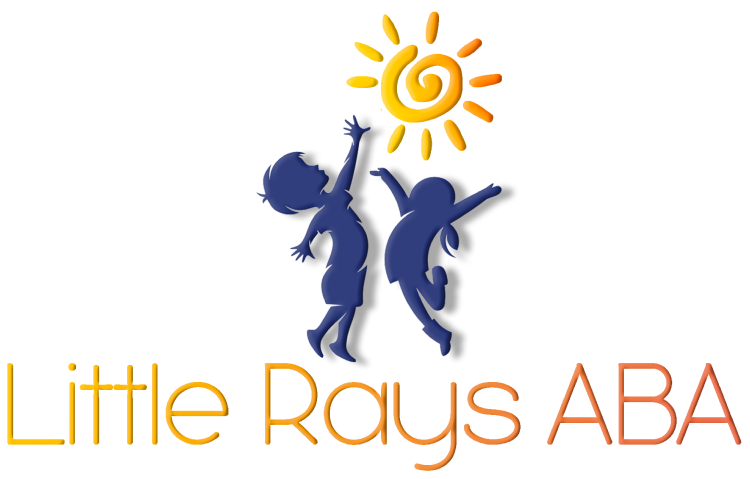A Glimpse Into ABA Therapy Success Stories
Early intervention is critical in supporting children on the autism spectrum, and ABA therapy has emerged as a beacon of hope for countless families. This blog explores the world of ABA therapy, shedding light on its principles, benefits, and, most importantly, the success stories that illustrate its remarkable impact on children with autism. From enhancing communication and social skills to fostering independence and improving overall quality of life, ABA therapy empowers individuals to navigate challenges and unlock their full potential.
Understanding ABA Therapy and Its Role in Autism Treatment
Applied Behavior Analysis (ABA) therapy stands as a cornerstone in autism treatment, lauded for its evidence-based approach and remarkable efficacy. Rooted in the science of behavior analysis, ABA therapy focuses on understanding the relationship between behavior and the environment. By carefully analyzing behavioral patterns and identifying triggers, therapists can develop individualized interventions to shape desired behaviors.
Furthermore, ABA therapy goes beyond simply addressing challenging behaviors. It encompasses a holistic approach that targets various developmental areas, including communication, social skills, daily living skills, and academic skills. ABA therapy empowers individuals to develop essential skills, increase independence, and improve their overall quality of life. Through positive reinforcement, skill-building exercises, and consistent support, ABA therapists strive to create a nurturing and empowering environment for individuals with autism to thrive.
Key Principles of ABA Therapy
To appreciate the effectiveness of ABA therapy, it's essential to understand its core principles. At its foundation lies behavior analysis – the scientific study of how individuals learn and modify their behavior based on environmental interactions. Applied behavior analysis (ABA) takes these principles and applies them systematically to real-life situations, aiming to bring about meaningful and positive changes in behavior.
One of the fundamental tenets of ABA therapy is the use of positive reinforcement. Rather than focusing on punishment or reprimands, ABA therapists emphasize rewarding desired behaviors. This can involve verbal praise, tangible rewards, or access to preferred activities. By consistently pairing positive reinforcement with desired actions, therapists help individuals associate those actions with positive outcomes, thereby increasing the likelihood of those behaviors occurring again.
Moreover, ABA therapy emphasizes individualized treatment plans. Recognizing that every child with autism is unique, with their own strengths, challenges, and learning styles, ABA therapists conduct thorough assessments to identify specific needs and develop tailored interventions. This personalized approach ensures that therapy is targeted, effective, and responsive to each child's individual journey.
How ABA Therapy Supports Children with Autism
ABA therapy provides comprehensive support to children with autism, addressing a wide range of areas crucial for their development and well-being. One of the primary focuses of ABA therapy is enhancing communication skills, which are often a significant challenge for individuals on the spectrum.
Therapists employ various techniques, such as visual supports, sign language, and social stories, to help children express themselves effectively and understand social cues. Furthermore, ABA therapy plays a pivotal role in fostering social skills, a critical aspect of navigating social interactions and building meaningful relationships.
Through structured playdates, social skills groups, and individualized interventions, children learn essential social skills, such as initiating conversations, taking turns, understanding emotions, and responding appropriately in different social situations. By improving social skills and communication abilities, ABA therapy significantly improves the overall quality of life for individuals with autism, empowering them to form connections, participate actively in society, and experience a greater sense of belonging.
Case Studies Highlighting ABA Therapy Success
The true impact of ABA therapy unfolds through the inspiring journeys of children whose lives have been positively transformed by its principles. These real-life success stories stand as testaments to the remarkable potential of ABA therapy in promoting growth, independence, and improved quality of life for individuals with autism.
From overcoming communication barriers to achieving developmental milestones and fostering meaningful social connections, these stories illustrate the power of personalized interventions and the unwavering dedication of therapists and families working together. Let's take a look into the lives touched by ABA therapy and witness the incredible progress that has given hope and empowerment to countless families.
Story of a Child's Improvement Through ABA
Owen, a bright five-year-old diagnosed with autism, struggled with communication and social interaction. He exhibited frequent meltdowns, struggled to express his needs, and showed little interest in engaging with others. However, after starting ABA therapy, Owen's life took a positive turn. Through personalized interventions and consistent support, Owen began to make significant improvements.
The therapists at Owen's ABA therapy center focused on teaching him essential life skills, such as potty training, dressing himself, and developing basic communication skills using picture cards. As Owen began to experience success in these areas, his confidence blossomed, and he became more receptive to learning new things. His meltdowns decreased in frequency and intensity, replaced by a newfound ability to communicate his needs and regulate his emotions.
Moreover, Owen’s social skills flourished. He began to initiate play with his peers, engage in reciprocal conversations, and enjoy social activities that once seemed daunting. Owen's journey is a testament to the transformative power of ABA therapy in unlocking the potential within every child with autism, helping them reach developmental milestones, gain independence, and live fuller, more connected lives.
Family Perspectives on ABA Therapy Success
For families and caregivers, witnessing their child’s progress through ABA therapy is an emotional and deeply rewarding experience. The success stories extend beyond the therapy room, impacting family dynamics, strengthening bonds, and bringing newfound joy and hope into the lives of everyone involved.
Parents and caregivers often describe the transformation as life-changing, not just for the child with autism but for the entire family unit. The skills and strategies learned through ABA therapy empower families to communicate more effectively, manage challenging behaviors with greater confidence, and create a more harmonious home environment. The collaborative nature of ABA therapy ensures that caregivers become active participants in their child's journey, working hand-in-hand with therapists to reinforce learning and support progress at home and in the community.
This shared commitment and consistent effort foster a sense of unity and empowerment, as families navigate the challenges and celebrate the triumphs together. The journey of ABA therapy becomes a testament to the power of love, dedication, and the unwavering belief in a child’s ability to grow and thrive.
Advancements in ABA Techniques and Tools
The field of ABA therapy is constantly evolving, with ongoing research and innovation leading to advancements in techniques and tools used to support individuals with autism. These advancements focus on enhancing the effectiveness of interventions, personalizing treatment plans, and improving the overall quality of care provided to individuals and their families.
From incorporating technology-based tools to utilizing innovative approaches that address specific challenges, the future of ABA therapy continues to hold immense promise. Here are some of the key advancements shaping the landscape of autism treatment and paving the way for even more positive outcomes in the future.
Innovations in ABA Therapy Approaches
Innovations in ABA therapy center around creating more personalized and effective treatment programs that cater to the unique needs and learning styles of each individual. This involves integrating complementary therapies and embracing technology to enhance the learning experience and promote generalization of skills.
One significant advancement is the incorporation of technology-based interventions, such as computer-assisted instruction and interactive apps. These tools provide engaging and interactive ways for children with autism to learn new skills, practice communication, and develop social competence at their own pace. Additionally, there's a growing emphasis on integrating ABA principles with other therapies, such as occupational therapy, speech therapy, and sensory integration therapy.
This multidisciplinary approach ensures that individuals receive comprehensive support tailored to their specific needs, addressing a wider range of challenges and enhancing their overall development. Here's a table highlighting some of the innovations:
| Innovation | Description |
|---|---|
| Telehealth ABA Therapy | Allows individuals to access therapy remotely via video conferencing, increasing accessibility and convenience. |
| Naturalistic Developmental Behavioral Interventions (NDBI) | Focuses on teaching skills in natural settings and during everyday routines, promoting generalization and enhancing social integration. |
| Augmentative and Alternative Communication (AAC) Devices | Provides alternative ways for individuals with limited verbal skills to communicate, fostering independence and self-expression. |
| Virtual Reality (VR) Therapy | Uses VR technology to create immersive simulations that help individuals practice social skills, manage anxiety, and overcome sensory challenges in a safe and controlled environment. |
The Importance of Tailored ABA Programs
Tailoring ABA programs to the unique needs, strengths, and preferences of each child is crucial for maximizing the effectiveness of therapy. One-size-fits-all approaches are ineffective in addressing the diverse range of challenges and learning styles present within the autism spectrum.
Therefore, a comprehensive assessment conducted by a Board Certified Behavior Analyst (BCBA) is paramount in developing a successful treatment plan. The BCBA will evaluate the child's current skillset, identify areas of need, consider parental goals and preferences, and create a customized plan that outlines specific interventions, goals, and strategies.
This personalized approach ensures that therapy is engaging, motivating, and aligned with the child’s needs, maximizing the potential for growth and progress. Regularly reviewing and adjusting the treatment plan based on the child’s progress is equally important, as it allows the BCBA to make necessary modifications and ensure that the therapy remains relevant and effective throughout the child’s developmental journey.
Conclusion
In conclusion, ABA therapy showcases remarkable success stories in supporting children with autism. The key principles and tailored programs of ABA therapy play a vital role in the progress observed in individuals. When looking for autism treatment therapy, it’s essential to find a provider that offers personalized and effective care tailored to each child’s needs. Successful therapy programs can lead to remarkable progress in communication, social skills, and behavior management. The right therapy provider will not only implement proven strategies but also work closely with families to ensure ongoing support and success. If you’re seeking an expert team that can guide your child toward lasting improvement, consider connecting with a trusted therapy provider in your area to explore all available options.
At Little Rays ABA, we’re dedicated to creating impactful success stories for children with autism. Our team of skilled therapists works closely with families to develop personalized ABA therapy plans that focus on communication, behavior management, and overall development. By tailoring our approach to meet the unique needs of each child, we’ve helped countless families see real, lasting improvements. Ready to see the potential for your child? Contact Little Rays ABA today and start your journey toward success with a team that truly cares about your child's progress.
Frequently Asked Questions
What age group benefits most from ABA Therapy?
Describe the item or answer the question so that Early intervention is crucial, and children as young as two years of age can benefit significantly from ABA therapy. Addressing developmental challenges during these formative years plays a crucial role in shaping cognitive abilities, social skills, and overall developmental trajectory. visitors who are interested get more information. You can emphasize this text with bullets, italics or bold, and add links.
How is progress measured in ABA Therapy?
Progress in ABA therapy is meticulously tracked and measured through data-driven approaches. Clinician's observations during therapy sessions, along with parental reports, help monitor significant improvements in areas such as communication, social interaction, and reduction in challenging behaviors like meltdowns or lack of eye contact.
Can ABA Therapy be combined with other therapies?
Absolutely. ABA therapy can be seamlessly integrated with other therapies like occupational therapy, speech therapy, and social skills groups. This holistic approach ensures individuals receive comprehensive care tailored to their unique needs.
What challenges might families face during ABA Therapy?
Families might face challenges such as financial costs associated with therapy, time commitment for sessions and at-home practice, and emotional stress related to their child’s progress. Adapting routines to accommodate therapy schedules can also lead to caregiver strain.
Related Posts





